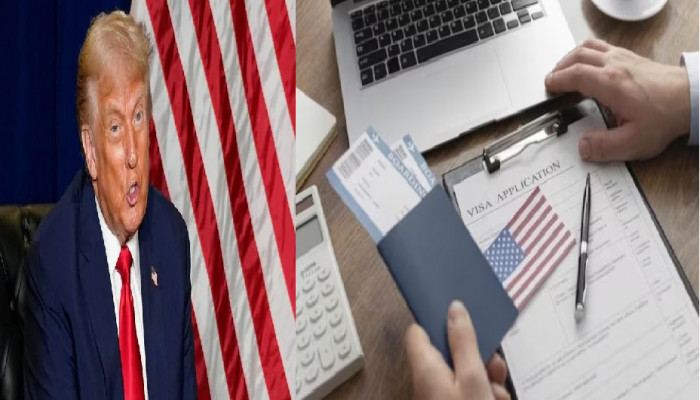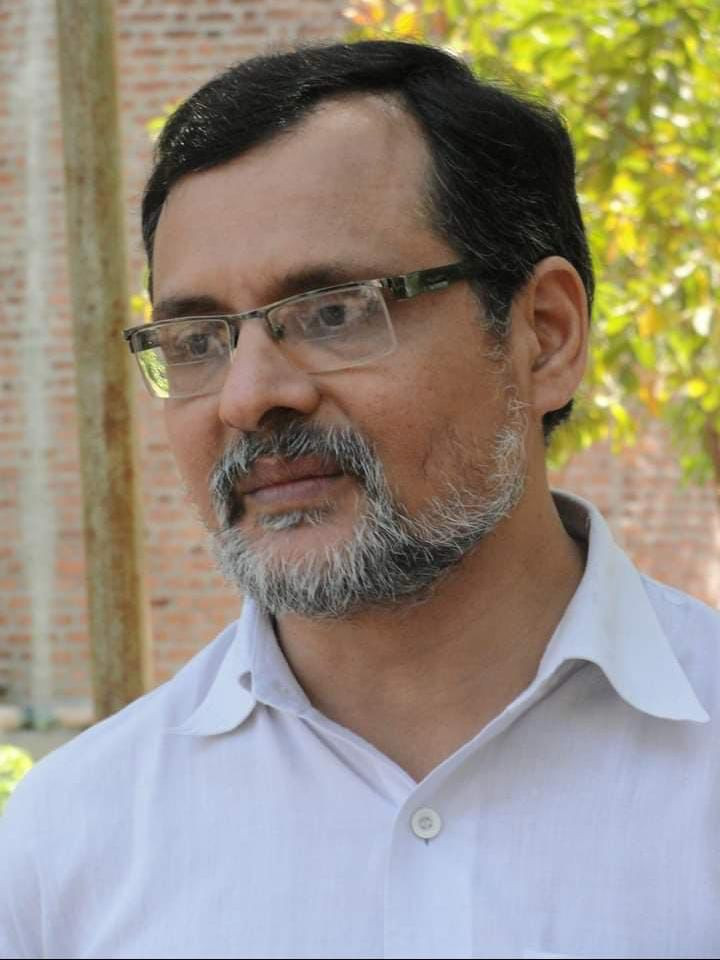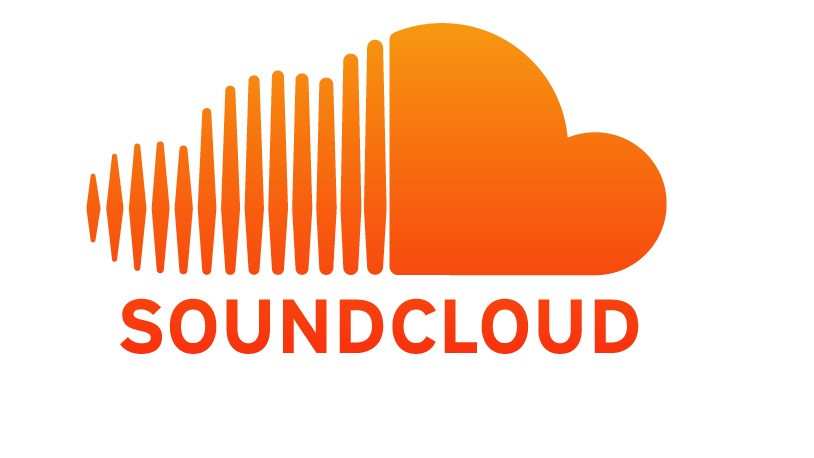U.S. Work Visa Overhaul - Migration 'Tariff'
- In Current Affairs
- 11:01 AM, Sep 26, 2025
- Viren S Doshi
U.S. Work Visa Program - Overview
The United States’ temporary work visa programs, particularly the H-1B visa, have been a cornerstone for Indian professionals as well as Indian students transitioning from U.S. universities to the workforce via Optional Practical Training (OPT). The Trump administration’s reforms, effective September 19, 2025, including a $100,000 one-time H-1B visa fee and stricter student visa vetting, have disrupted this mutual arrangement. These policies, likened to high tariffs on goods and potential high tariffs on services, aim to protect American workers but raise concerns about innovation, U.S.-India relations, and India’s role as a talent and labour powerhouse for the receptive world.
This article explores the American temporary work visa system, including the erstwhile H-1A visa, misuse of these visas, the rationale for reforms, their impact on Indian students and OPT, reactions from Indian Americans, the Indian government, and Indian people, projected declines in student mobility and remittances, and the broader implications for U.S.-India relations, emphasising the path forward.
Temporary Work Visas in the U.S.
Temporary work visas, also known as non-immigrant work visas, enable foreign nationals to work in the U.S. for a limited period in specific roles, distinct from immigrant visas that lead to permanent residency.
Key programs include:
H-1B Visa: For speciality occupations requiring a bachelor’s degree or higher, primarily in science, technology, engineering, and mathematics (STEM) fields. The United States Citizenship and Immigration Services (USCIS) issues 85,000 H-1B visas annually (65,000 general, 20,000 for U.S. advanced-degree holders).
(H-1A Visa: Historically, the H-1A visa was a temporary program (1989–1995) under the Immigration Nursing Relief Act, allowing foreign nurses to mitigate U.S. healthcare shortages. It permitted registered nurses to work for up to five years, with a cap of 500 visas annually for adjusting status to permanent residency. Though discontinued, recent discussions in 2025, driven by healthcare labour shortages of around 200,000 nursing vacancies projected by 2030, have proposed reviving the H-1A visa. The American Tech Workforce Act mentions a potential H-1A revival for nurses and medical professionals, but as of September 25, 2025, no legislation has been enacted, and details remain speculative. If implemented, it could attract Indian nurses, who make up 6% of U.S. foreign nurses, but would likely face similar high fees and scrutiny as H-1B visas.)
H-2A Visa: For temporary agricultural workers addressing seasonal farming needs.
H-2B Visa: For non-agricultural seasonal workers, such as in hospitality or construction.
L-1 Visa: For intracompany transferees within multinational companies. These visas are also extensively used by certain companies.
O-1 Visa: For individuals with extraordinary abilities in arts, sciences, or business.
TN Visa: For Canadian and Mexican professionals under the United States - Mexico - Canada Agreement (USMCA).
The H-1B visa remains the primary pathway for migrant Indian professionals and Indian students transitioning from F-1 student visas to OPT and then to employment, with 283,759 (71%) of the 399,395 H-1B visas approved in 2024 going to Indian nationals.
Optional Practical Training (OPT): A Vital Bridge Under Threat
Optional Practical Training (OPT) allows F-1 visa students to work in the U.S. for up to 12 months post-graduation in a field related to their degree, with STEM graduates eligible for a 24-month extension (totalling 36 months). OPT bridges academic study and H-1B sponsorship, enabling students to gain experience and employers to assess candidates.
Key features include:
Eligibility: F-1 visa holders pursuing or having completed a U.S. degree.
Application Process: Students apply through USCIS within 90 days before or 60 days after graduation, with a $420 fee (2025 rate).
Employment Requirements: Jobs must align with the student’s major, with STEM OPT requiring a formal training plan and employer compliance with Department of Homeland Security (DHS) regulations.
Cap-Gap Provision: Extends work authorisation if an H-1B petition is filed before OPT expires, until the H-1B decision or October 1.
In 2024, approximately 200,000 international students participated in OPT, with Indian students (25.3% of international students) comprising an estimated 50,600 participants, especially in STEM. The American Tech Workforce Act, introduced by Nationalist Conservative Republican Senator Jim Banks in September 2025, proposes eliminating OPT to prioritise U.S. graduates, threatening this pathway.
Misuse of H-1B Visas for Cheap Labour and Talent
The H-1B program faces criticism for enabling employers to access cheaper labour, potentially undercutting American workers:
Wage Suppression: Some firms hire H-1B workers at lower salaries than U.S. counterparts, despite prevailing wage requirements. In 2023, the median H-1B salary was $94,000 for new hires versus $129,000 for existing holders, suggesting potential underpayment.
Job Displacement: Tech layoffs followed by H-1B applications fuel claims of replacing thousands of U.S. workers with these visa holders.
Outsourcing Firms’ Role: Indian IT companies, securing 71% of H-1B visas in 2024, have been placing workers at third-party sites, ultimately depressing wages.
Visa Dependency: H-1B and OPT workers’ reliance on employer sponsorship limits mobility, increasing exploitation risks. A potential H-1A visa could face similar concerns, with nurses vulnerable to low wages or poor conditions, as seen in past programs.
Supporters, including tech leaders like Elon Musk, argue that H-1B workers fill STEM talent gaps, with many Indian professionals like Satya Nadella (Microsoft CEO) and Sundar Pichai (Google CEO) driving innovation. Former Infosys CFO Mohandas Pai counters that top H-1B salaries exceed $100,000, challenging cheap labour claims. A revived H-1A could address healthcare shortages but risks similar scrutiny.
Trump Administration’s Stricter Policies and High Fees
On September 19, 2025, President Donald Trump signed a proclamation imposing a $100,000 one-time fee on new H-1B visa petitions, effective September 21, 2025, clarified after initial confusion about annual payments. Additional reforms include:
Rationale: The administration cites “systemic abuse” by IT outsourcing firms, stating they replace U.S. workers with lower-paid labour, posing a “national security threat.” The fee ensures only high-value talent is hired.
Project Firewall: The Department of Labour’s initiative intensifies H-1B application scrutiny to protect American wages.
Prevailing Wage Rules: The Department of Labour is updating rules to raise H-1B wage floors, potentially to $150,000, per the American Tech Workforce Act.
Weighted Lottery: The Department of Homeland Security will prioritise high-skilled, high-paid applicants in the H-1B lottery.
Analogy with Tariffs: The H-1B fee mirrors 50% tariffs on Indian goods (25% reciprocal, 25% for Russian oil purchases) announced in July 2025. The proposed Halting International Relocation of Employment (HIRE) Act suggests a 25% tax on outsourced services, affecting services from India’s $283 billion IT sector.
Gold Card Visa: A $1 million fee-based visa targets elite talent.
OPT Elimination Proposal: The American Tech Workforce Act seeks to end OPT, arguing it undercuts U.S. graduates.
H-1A Speculation: While not in force, discussions of reviving the H-1A visa for nurses include potential $50,000 fees and caps of 10,000 visas annually, with strict wage and labour protections to avoid past exploitation.
Critics and immigration lawyers warn that the H-1B fee makes it a “luxury work permit,” sidelining startups and pushing talent to Canada or Europe, risking U.S. competitiveness in AI against CCP-occupied China. A potential H-1A visa could face similar barriers, limiting its impact.
Impact on Indian Students: Education, OPT, and Work Visas
Indian students, comprising 25.3% of U.S. international students (268,923 in 2022/2023), rely on the F-1 visa, OPT, and H-1B pathway:
Reduced Student Mobility: Stricter F-1 visa vetting, including social media checks, led to a 46% drop in U.S. study inquiries from Indian students in 2024. Projections for 2025 estimate a 30% enrollment decline (to 188,246), driven by H-1B costs and OPT uncertainty.
Financial Impact on U.S. Education Industry: Indian students contributed $47 billion in 2022, projected to reach $70 billion by 2025. A 30% enrollment drop could reduce this to $49 billion, saving Indian families $21 billion but adversely impacting U.S. universities.
OPT Challenges: The $100,000 H-1B fee and proposed OPT elimination make post-OPT sponsorship cost-prohibitive. In 2024, 50,600 Indian students participated in OPT, but a 30% enrollment drop could reduce this to 35,420 by 2026. Stricter STEM OPT compliance, including site visits, adds barriers.
H-1B Transition: The H-1B fee reduces OPT to H-1B transitions, with a projected 40% drop in Indian H-1B approvals (from 283,750 to 170,250) by 2026. The cap-gap provision offers temporary relief, but high costs deter sponsorship.
H-1A Potential: If revived, an H-1A visa could attract Indian nurses (6% of U.S. foreign nurses, ~12,000 in 2024), but high fees and caps may limit uptake, with only 2,000–3,000 projected approvals annually.
Alternative Destinations: Indian students are shifting to Canada (32% of Indian students abroad), the UK (13.9%), and Australia (9.2%), with accessible post-study work options like Canada’s three-year Post-Graduation Work Permit. Germany’s stable migration policies also attract talent.
India’s Role as a Talent and Labour Powerhouse
India is a global talent and labour powerhouse, supplying skilled professionals to the free world and Gulf countries:
Free World: Indian professionals dominate U.S. tech (71% of H-1B visas), with leaders like Nadella and Pichai shaping innovation. India’s 65% under-35 population and 1.5 million annual STEM graduates fuel its vital role.
Gulf Countries: India supplies 8.5 million workers to Gulf nations (UAE, Saudi Arabia, Qatar), contributing $30 billion in remittances annually. Roles include construction, healthcare (nurses), and engineering.
Global Impact: India’s $283 billion IT sector and global capability centres (GCCs) employ millions, with firms like TCS and Infosys serving Fortune 500 companies. By 2030, GCCs are projected to generate $100 billion.
Reactions to U.S. Visa Reforms
Indian Americans: The 4.2 million-strong Indian American community, the second-largest immigrant group in the U.S., expresses mixed sentiments. There are concerns about the Trump Administration’s policies straining ties. Rising anti-Indian sentiment online, with over 44,000 slurs targeting South Asians in May–June 2025, fuels concerns. Leaders see the H-1B fee as strangulation, arguing it stereotypes Indians as either high-earning tech workers or low-wage labourers. Indian Americans advocate for a merit-based system, emphasising India’s talent as vital for U.S. innovation, including in healthcare, where an H-1A visa could help.
Indian Government: The Ministry of External Affairs, via a September 20, 2025, statement, expressed concern over H-1B restrictions, citing “humanitarian consequences.” In September 2025, the Goods and Services Tax (GST) reduction aims to boost domestic consumption, offsetting tariff and remittance losses.
Indian People: Public sentiment has hardened, with a Pew survey (April 2025) showing U.S. favourability dropping from 79% in 2021 to 47% post-tariffs. Youth remain optimistic about global opportunities in Canada, Europe, and the Gulf.
Inward Remittances to India: Mitigating Shortfalls
India received $135.46 billion in remittances in 2024, with the U.S. contributing 27.7% ($37.5 billion). Visa restrictions could reduce this in future:
Projected Decline: A 30% drop in student enrollment (to 188,246), 30% OPT decline (to 35,420), and 40% H-1B drop (to 170,250) could lower U.S. remittances by 20–25% ($7.5–$9.4 billion), to $28.1–$30 billion by 2026. A potential H-1A visa could add $100–$200 million annually if 2,000–3,000 Indian nurses secure it, assuming $50,000 salaries.
Mitigation Strategies: India is diversifying remittance sources, with the UK (10.8%), UAE (19.2%), and Singapore (6.6%) growing. The UK’s Migration and Mobility Partnership tripled Indian migration to 250,000 in 2023, boosting remittances. Gulf countries contribute $30 billion annually, cushioning U.S. losses. Canada and Australia’s policies support skilled migration. Digital remittances (73.5% of transactions in 2023–24) reduce costs (6.4% vs. 3% Sustainable Development Goal target), sustaining inflows. By 2029, remittances are projected to reach $160 billion. On the other hand, India's spending on student fees to U.S. universities would decrease much more than projected above.
Indian IT Impact: The H-1B fee could cut IT firms’ profits by 7–15%, with TCS facing high fees per renewal for 5,500 employees. Firms may offshore work or hire locally, eroding margins.
Impact on U.S.-India Relations: Challenges and Opportunities
The U.S.-India partnership, rooted in shared democratic values and countering the CCP-occupied China-led nexus of anti-national forces, faces strains but also has a lot of resilience:
Economic Tensions: The $100,000 H-1B fee, potential OPT elimination, and 50% tariffs (25% reciprocal, 25% for Russian oil) threaten India’s $65 billion IT exports and $37.5 billion in U.S. remittances. India’s pause on $3.6 billion U.S. defence deals (e.g., Stryker vehicles) signals friction, though denials suggest negotiation leverage. The HIRE Act’s 25% service tax could further impact India’s IT sector. Sanctions on Chabahar port operations add to this. A potential H-1A visa, while promising for healthcare, may face similar cost barriers.
Geopolitical Context: India’s Russian oil purchases and BRICS engagement frustrate U.S. expectations. Trump’s claim of brokering an India-Pakistan ceasefire, rejected by India, and his “dead economy” remarks have fuelled anti-American sentiment (47% U.S. favourability). However, the February 2025 U.S.-India COMPACT initiative and “Mission 500” ($500 billion trade by 2030) show commitment.
Indian American Influence: The 4.2 million Indian Americans, contributing $80 billion in U.S. investments and 400,000 jobs, are a “tremendous source of strength.” Their advocacy for clearing misunderstandings on issues could play a vital role in bridging and cementing relations. The common values centred around democracy and family system, as well as the common fight against Wokeist Leftist Communist Jihadi nexus, connect the Indian American community with the conservative nationalist movement despite certain differences. Diaspora is likely to succeed in bridging the relations.
Win-Win Path: Negotiations, resumed in September 2025, aim for a Bilateral Trade Agreement by fall 2025. Joint Quad initiatives and INDUS Innovation (space, energy) can deepen ties, leveraging India’s talent for mutual growth.
Effects on India: Short-Term Pain, Long-Term Gain
India’s role as a talent powerhouse faces immediate challenges but long-term opportunities:
Short-Term Challenges
Reduced U.S. Opportunities: A 30% drop in student enrollment (to 188,246), a 30% OPT decline (to 35,420), and 40% H-1B drop (to 170,250) limit prospects. A potential H-1A visa may help nurses, but it is limited by fees and caps.
Remittance Shortfall: A $7.5–$9.4 billion U.S. remittance drop impacts states like Maharashtra (20.5% of remittances) and Kerala (36% of state GDP). Education expenses would decrease.
IT Sector Pressure: H-1B costs ($150–$550 million) and the HIRE Act’s service tax could disrupt IT firms’ margins and timelines.
Long-Term Opportunities
Talent Retention: Returning as well as retained students and professionals could fuel tech hubs, creating $100 billion in GCCs by 2030.
Market Diversification: India’s trade agreements with the UAE (2022), Australia (2022), and the UK (2025) reduce U.S. reliance. Gulf countries and Europe offer new markets for IT and healthcare workers.
Domestic Innovation: Retained talent may accelerate India’s AI and tech sectors, leveraging its 65% under-35 population and 1.5 million STEM graduates.
Comparison with CCP-Occupied China
CCP-occupied China, with 11.7% of H-1B visas, faces similar restrictions but has a shrinking working-age population and $48 billion in remittances (vs. India’s $135.46 billion). India’s democratic framework, English-speaking workforce, and Gulf labour exports give it a competitive edge. China’s job fairs (e.g., Nanjing’s 20,000 jobs) target talent, but India’s global diaspora and trade diversification enhance its resilience.
Conclusion
The Trump administration’s $100,000 H-1B fee, potential OPT elimination, and 50% tariffs challenge India’s role as a talent powerhouse, reducing student enrollment by 30% (to 188,246), OPT participation by 30% (to 35,420), and H-1B approvals by 40% (to 170,250) by 2026, saving Indian families $21 billion but impacting U.S. universities.
A $7.5–$9.4 billion U.S. remittance shortfall is likely to be mitigated by Gulf, UK, and digital channels, with remittances projected to hit $160 billion by 2029.
Indian Americans advocate for fairness, the Indian government negotiates strategically, and public sentiment pushes for self-reliance.
While short-term strains test U.S.-India ties, a win-win path through trade agreements and Quad cooperation can leverage India’s talent for mutual prosperity, outpacing CCP-occupied China.
Collaborative initiatives like INDUS Innovation offer hope for a balanced partnership.
Disclaimer: The opinions expressed within this article are the personal opinions of the author. MyIndMakers is not responsible for the accuracy, completeness, suitability, or validity of any information on this article. All information is provided on an as-is basis. The information, facts or opinions appearing in the article do not reflect the views of MyindMakers and it does not assume any responsibility or liability for the same.







Comments